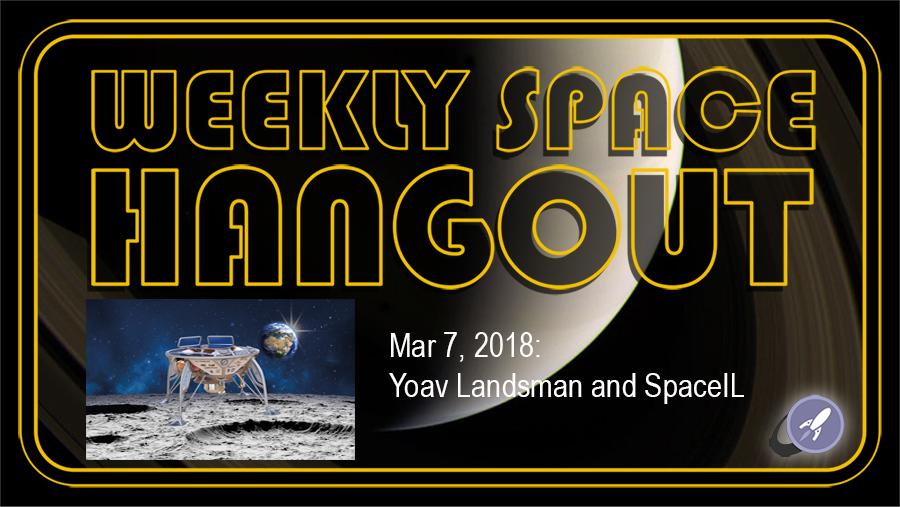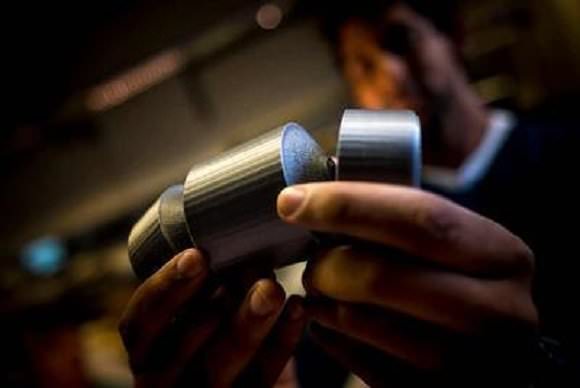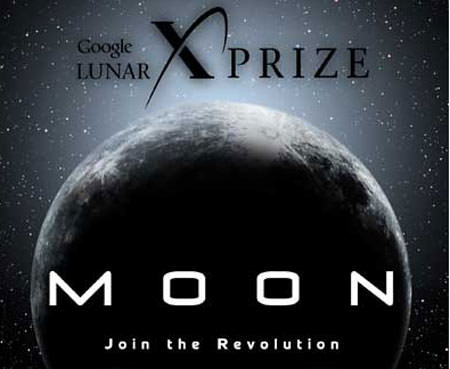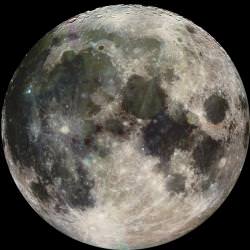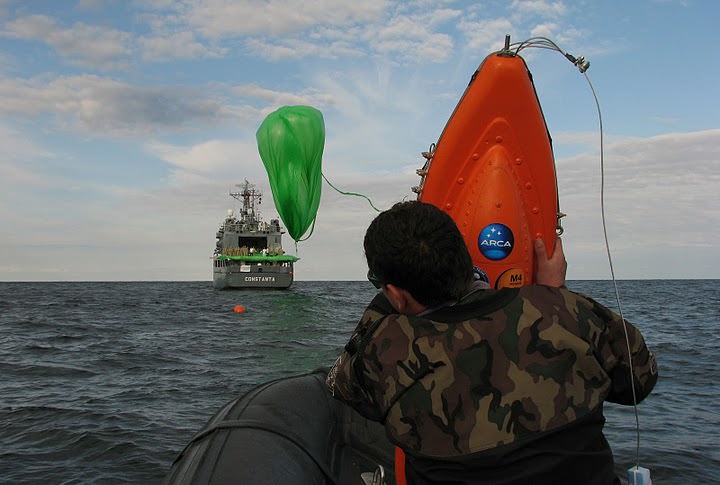Welcome to the 558th Carnival of Space! The Carnival is a community of space science and astronomy writers and bloggers, who submit their best work each week for your benefit. We have a fantastic roundup today, so now, on to this week’s stories!
Continue reading “Carnival of Space #558”
Weekly Space Hangout: March 7, 2018: Yoav Landsman and SpaceIL
Hosts:
Fraser Cain (universetoday.com / @fcain)
Dr. Paul M. Sutter (pmsutter.com / @PaulMattSutter)
Dr. Kimberly Cartier (KimberlyCartier.org / @AstroKimCartier )
Dr. Morgan Rehnberg (MorganRehnberg.com / @MorganRehnberg & ChartYourWorld.org)
Special Guests:
Yoav Landsman is a System Engineer at the Israeli nonprofit organization, SpaceIL, which is trying to land the first Israeli spacecraft on the Moon as part of the Google Lunar XPrize competition. Previously, Yoav, a founding member of the WSH Crew, joined us to tell us about SpaceIL’s plans. Today, Yoav again joins us to provide an update on the status of their program.
Announcements:
If you would like to join the Weekly Space Hangout Crew, visit their site here and sign up. They’re a great team who can help you join our online discussions!
We record the Weekly Space Hangout every Wednesday at 5:00 pm Pacific / 8:00 pm Eastern. You can watch us live on Universe Today, or the Weekly Space Hangout YouTube page – Please subscribe!
This is Important! Students Are Figuring Out How to Make Beer on the Moon

When human beings colonize other Solar bodies, how will they see to their basic needs? Already, research has been performed to determine where colonists would be able to procure water, how they might grow their own food, and where and how they might live. But what about the finer things in life, the things that make all the hard labor and sacrifice worth it? In case it’s not clear yet, I’m talking about beer!
If and when Lunar or Martian colonies become a reality, will the colonists be able to brew and enjoy their own beer? Or will imported beer be the only thing available to them? That’s the question a team of bioengineering students from the University of California San Diego sought to answer. As finalists who competed in the Lab2Moon competition being held by TeamIndus, they combined their love of beer with their love of space exploration.
As the only Indian team in the Google Lunar XPRIZE competition, TeamIndus has been working on a privately-funded spacecraft to send to the Moon. Once complete, TeamIndus hopes to conduct a soft landing on the surface of the Moon later this year. Their accomplishments so far include being one of the five teams selected to compete in the Milestone Prizes and successfully winning the $1 million Milestone Prize for their landing technology.
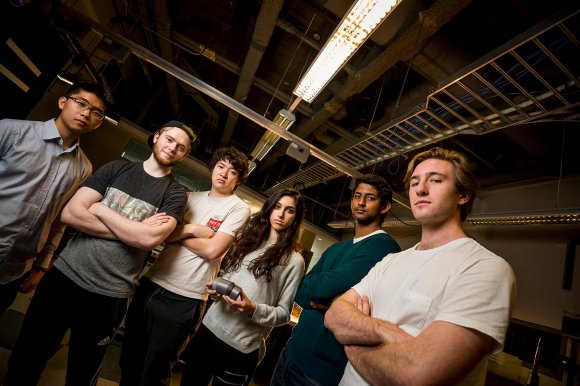
The Lab2Moon competition was held in order to see a youth experiment brought to the Moon aboard that spacecraft. And while their experiment did not take home the top prize, their final prototype will still be going into space. Thanks to Synergy Moon, who won an XPrize verified launch contract, the experiment will be launched aboard a rocket this December (the planned launch date is currently Dec. 28th, 2017).
For the sake of their experiment, the UC San Diego team – all undergraduates with the Jacobs School of Engineering – sought to test if yeast would be viable in a Lunar environment. As the key ingredient in the production of beer (and many other beneficial things), their experiment sought to determine if Lunar colonists will be capable of becoming their own brewmasters.
Their team name is “Original Gravity”, a delicious pun that alludes to both brewing and the Lunar conditions they are investigating. In the case of brewing, Original Gravity (OG) is the measure of sugars dissolved in the wort (the beer before it is fermented). In the case of the Moon, it refers to the fact that Lunar gravity is just 0.165 times that of Earth’s, which could affect the behavior of the microorganisms like yeast.
As Neeki Ashari, a fifth-year bioengineering student and the team’s PR & Operations Lead, said in a University press release:
“The idea started out with a few laughs amongst a group of friends. We all appreciate the craft of beer, and some of us own our own home-brewing kits. When we heard that there was an opportunity to design an experiment that would go up on India’s moonlander, we thought we could combine our hobby with the competition by focusing on the viability of yeast in outer space.”
With sponsorship from the Omega Yeast Labs, the team designed a unique brewing system. First, all the prep work that precedes the adding of yeast – for instance, combining malted barley and water to create wort – would take place on Earth. Second, the team plans to combine the “fermentation” and “carbonation” phases – which are usually done separately – into one phase.
This process makes for a system that is much easier to design, eliminates the need for releasing accumulated CO² (which can be a hazard) and also prevents the possibility of over-pressurization if anything in the system fails. Last, the testing of fermentation will not rely on density measurements that rely on gravity (as brewers do on Earth), using pressure to determine sugar content instead.
As Han Ling, a fifth-year bioengineering undergraduate student and the team’s leader, explained, “Converting the pressure buildup to fermentation progress is straightforward, as long as volume and original gravity – specific gravity before fermentation, hence our name – are known prior to the experiment.” Measuring roughly as wide as a soda can, their system is able to ferment yeast and worst to create beer, even under Lunar conditions.
In addition to being the first-ever experiment to brew beer in space, their experiment will also be the first to craft beer using such a small apparatus. A Srivaths Kaylan, a fourth-year nano-engineering major and the team’s mechanical lead, indicated:
“Our canister is designed based on actual fermenters. It contains three compartments—the top will be filled with the unfermented beer, and the second will contain the yeast. When the rover lands on the moon with our experiment, a valve will open between the two compartments, allowing the two to mix. When the yeast has done it’s job, a second valve opens and the yeast sink to the bottom and separate from the now fermented beer.”
Looking to the future, Ashari and the team hope to see their experiment adapted for use on other planets – like Mars! Other proposed experiments that were entered in the competition included methods for photosynthesis to producing electricity in a Lunar environment. Beyond making beer, understanding how yeast will behave in a Lunar environment is also important in the development of pharmaceuticals and yeast-containing foods, such as bread.
It certainly is interesting to think about what kind of beers could be produced in an extra-terrestrial environment, isn’t it? Will future generations of brewers have the option of using locally-grown barley, wheat, hops, and yeast cultures to craft their beer? Will the use of Lunar or Martian water have an effect on the taste of the beer?
And then there’s the matter of names and styles. Will Lunar brewers create a Dark Side of the Moon Stout? Will the people of Mars specialize in Red Ales? Like I said, interesting!
Further Reading: UC San Diego, ABC 10News
Carnival of Space #497
Welcome, come in to the 497th Carnival of Space! The Carnival is a community of space science and astronomy writers and bloggers, who submit their best work each week for your benefit. I’m Susie Murph, part of the team at Universe Today and CosmoQuest. So now, on to this week’s stories!
Continue reading “Carnival of Space #497”
Moonbase by 2022 For $10 Billion, Says NASA
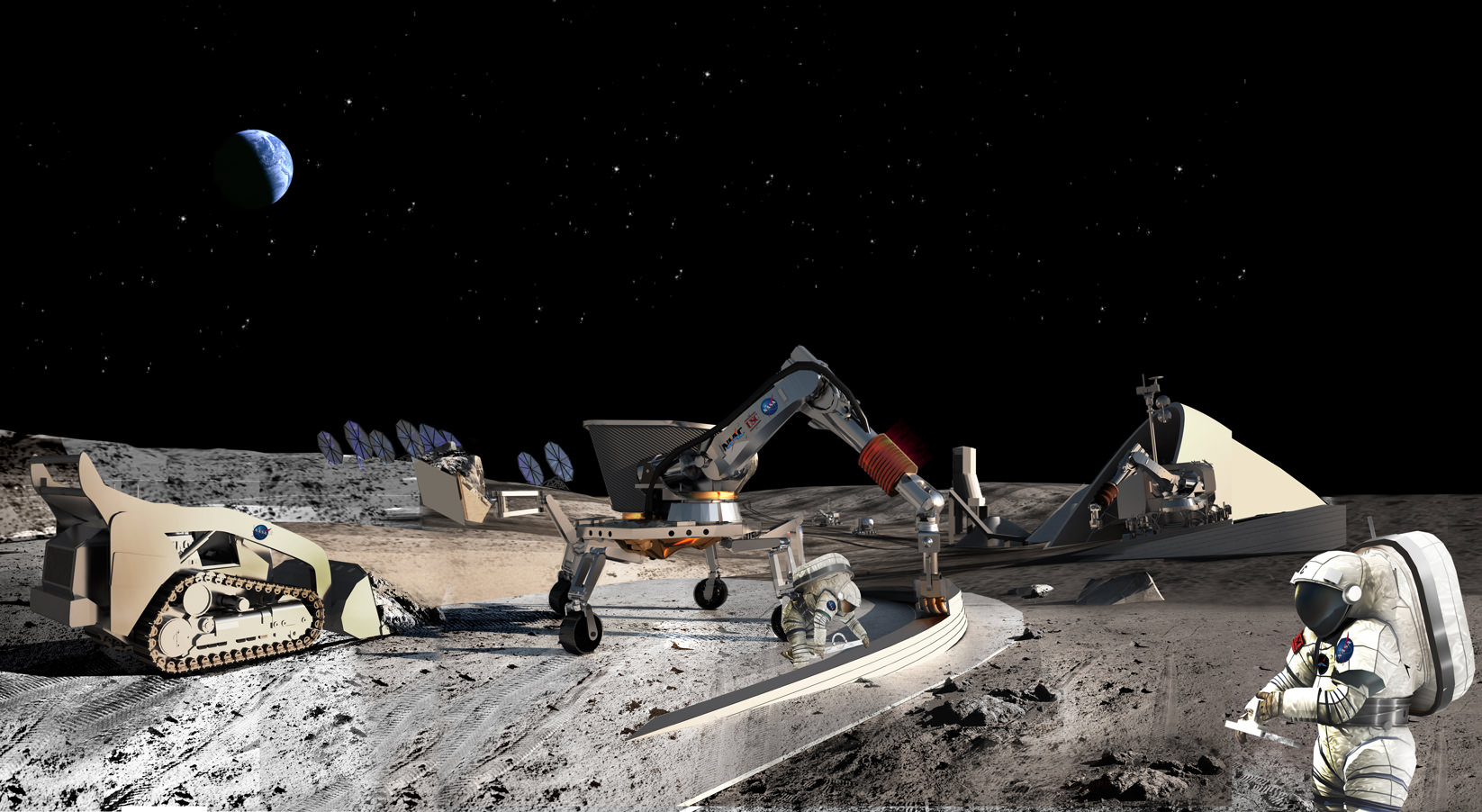
Returning to the Moon has been the fevered dream of many scientists and astronauts. Ever since the Apollo Program culminated with the first astronauts setting foot on the Moon on July 20th, 1969, we have been looking for ways to go back to the Moon… and to stay there. In that time, multiple proposals have been drafted and considered. But in every case, these plans failed, despite the brave words and bold pledges made.
However, in a workshop that took place in August of 2014, representatives from NASA met with Harvard geneticist George Church, Peter Diamandis from the X Prize Foundation and other parties invested in space exploration to discuss low-cost options for returning to the Moon. The papers, which were recently made available in a special issue of New Space, describe how a settlement could be built on the Moon by 2022, and for the comparatively low cost of $10 billion.
Continue reading “Moonbase by 2022 For $10 Billion, Says NASA”
Going to the Moon? Don’t Touch the Historical Artifacts, NASA Says
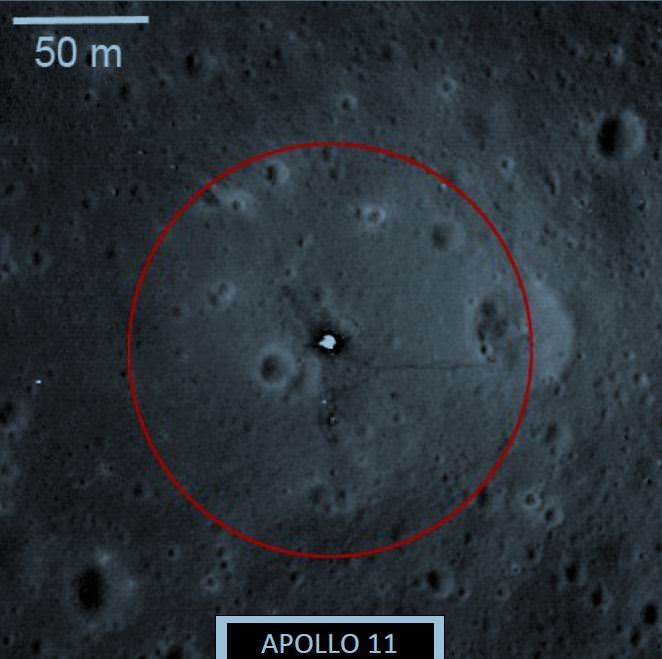
[/caption]
Don’t say you haven’t been warned. NASA put out an official document today specifying how close any future spacecraft and astronauts visiting the Moon can come to the artifacts left on the lunar surface by all US space missions, including the Apollo landing sites, any robotic landing sites like Surveyor and impact sites like LCROSS.
While these recommendations are not mandatory (there’s obviously no way to enforce this yet) the document states, “rather, it is offered to inform lunar spacecraft mission planners interested in helping preserve and protect lunar historic artifacts and potential science opportunities for future missions.”
For example, NASA recommends an artifact boundary extending 75 m from the Apollo 11 lunar module descent stage.
NASA isn’t expecting a rush of astro-looters to descend upon the Moon, but with China discussing a Moon landing, and with several Google Lunar X PRIZE teams hoping to send robotic landers, they want to make sure nothing from previous missions is disturbed.
“In the 50 years since the first lunar missions, the spaceflight community has not formally provided recommendations to the next generation of lunar explorers on how to preserve the original artifacts and protect ongoing science from the potentially damaging effects of nearby landers,” NASA said in an accompanying press release, saying that they recognize the steadily increasing technical capabilities of space-faring commercial entities and nations throughout the world that may be on the verge of landing spacecraft on the surface of the Moon.
The document specifies how close another spacecraft can hover, flyover, hop or touchdown near landing sites or spacecraft.
And not just hardware is included in the “don’t touch” areas: “U.S. human, human-robotic lunar presence, including footprints, rover tracks, etc., although not all anthropogenic indicators are protected as identified in the recommendations,” the document says.
NASA’s decisions on proximity boundaries were made from recommendations from external experts from the historic, scientific and flight-planning communities and apply to US government artifacts on the lunar surface.
NASA says they released this document to open discussions with commercial and international space agencies, and seek any improvements to the recommendations.
Read the full document here (pdf file).
Source: NASA
Interview and tour with GLXP team Omega Envoy – SpacePod 2011.05.30
Spacevidcast’s Jason Rhian had a chance to go behind the scenes with the Google Lunar X PRIZE team Omega Envoy to take a peek at their new facility and the progress of their lunar rover. Omega Envoy is one of nearly 30 teams competing to win part of the $30 million dollar pot for sending a rover to the moon and completing specific tasks.
Continue reading “Interview and tour with GLXP team Omega Envoy – SpacePod 2011.05.30”
When Will We Return to the Moon and Who Will it Be?
At the end of the movie “Apollo 13,” when the character of Jim Lovell says “I look up at the Moon and wonder, when will we be going back, and who will that be?” he probably didn’t have anything like the Google Lunar X PRIZE in mind. Similarly, when the GLXP was announced back in 2007, the founders had no idea that nearly 30 teams would be vying for the $30 million in incentive prizes to return to the Moon’s surface with a robotic craft.
Will Pomerantz, the former Senior Director of Space Prizes from the X PRIZE Foundation recalled an advisory committee meeting several years ago before the prize was announced. “We went around the room and asked everyone to estimate how many teams are going to compete in this,” Pomerantz said. “The answers ranged from zero on the low end to maybe a dozen or fifteen at the absolute max and that probably came either for myself or from Peter Diamandis, our founder. The fact that we have almost thirty blows us away, and we couldn’t be more thrilled.”
The X PRIZE Foundation recently announced the official roster of 29 teams that will attempt to send a robot to the Moon that travels at least 500 meters and transmit video, images, and data back to the Earth. The organization says this signifies a “new era of exploration’s diverse and participatory nature.”
The teams are headquartered all over the world — seventeen different headquarter nations — and most of the teams are actually multinationals, so team members are working in almost seventy different countries on every continent except for Antarctica.
“This is going to be the first time anything has been on the lunar surface since the final Soviet robotic mission in 1976,” Pomerantz said and those of us in the states really haven’t seen any data directly from the lunar surface since 1972, so we think that there’s at a ton to be learned scientifically, but also there’s a huge inspirational factor there for people to be able to see those images again.”
Of course, the robotic missions being designed are much less complicated and expensive than a human mission to the Moon.
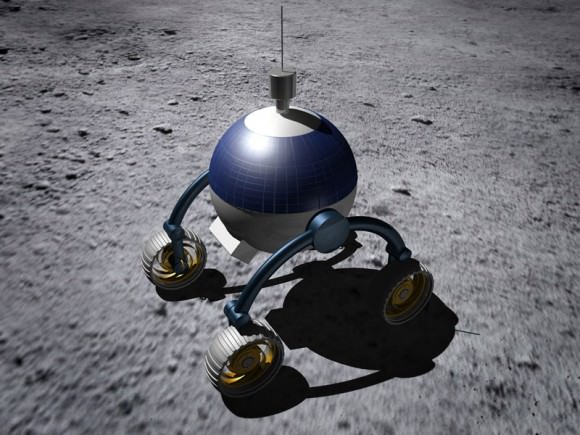
The concepts range from snake-like robots that slither along the surface to ball-shaped vehicles that can shift their mass internally move along the lunar surface to small robotic vehicles – “not too much bigger than the cell phone you’ve got your pocket,” Pomeranzt said – to rovers that look very much NASA- or ESA-designed vehicles. Others won’t rove at all, but reignite their engines to take off and fly to another location. This may allow them to explore totally different types of terrain that is totally inaccessible to a rover.
The landing sites that the various teams are shooting for differ as well. “Essentially everyone is going on the near side for obvious communication reasons,” Pomerantz said. “Almost everyone is going in a fairly low latitude and going in the equatorial zones.”
There are bonus prizes of several million additional dollars for teams that can go to particular sites, such the South Pole, where they could possibly confirm the findings at the LCROSS impact site, or if they go back to visit one of the Apollo landing sites or one of the sites of a non-human mission.
“I know that causes some concern for some people,” Pomerantz said. “People very rightly want to make sure that we are being respectful of those treasured historical sites. But I think it is important to recognize that no one values those sites more than the men and women around the world who are dedicating their careers to getting back to the surface of the Moon. They absolutely understand that those are our valuable treasures that need to be respected but they also understand that there’s an enormous amount to be gained from going back and respectfully revisiting the. There is some very interesting science that we can do by going back and seeing how the site and how those materials have changed over the past forty years.”
Why offer a prize to return to the Moon?
“We want to open the space frontier in the way similar to what we did it for the first X PRZE, the Ansari X PRIZE,” Pomerantz said. “We want to make space exploration and lunar exploration in particular radically cheaper. We think when you create a much lower price point, when you bring the price of missions down to a tenth to what it historically has been or even a hundredth of what it historically has been, you’re opening it up to a huge variety of new customers, new science communities, new industries that just can’t exist at the current price points.”
All the teams have to come up with their own funding.
“This is really a cash on delivery kind of model,” Pomerantz said. “But we don’t want to pay people to try. There are enough other people out there that are funding people to try new things. We want to reward people upon success. That means that no matter how crazy an idea might seem today, if it happens to be the best one, then we’ll reward it.”
Right now, the prize money is set to expire by the end of 2015, but the GLXP organizers are quite confident that at least one of the 29 teams will successfully reach the Moon before then. And obviously, NASA is confident, as well, as the space agency is offering a program called the Innovative Lunar Demonstration and Data Program, which is essentially $30 million dollars worth of data purchases from commercial efforts that reach the Moon.
“This is NASA saying for first time ever we are able to buy data about conducting lunar missions and about the Moon itself, rather than having to go out and pay for the acquisition of that data directly on the hopes that it will work,” Pomerantz said. “This is a great buy for NASA and I think they are getting a tremendous value and is a great way for teams to show their investors and supporters that, hey we’ve got a willing customer here. And NASA is not afraid of us; this isn’t an ‘us versus them competition.’ This is an area where our success is their success and vice versa.
Pomerantz is leaving the X PRIZE Foundation to begin work with Virgin Galactic. “I’ve loved every minute of being with the X PRIZE, but this was an opportunity just too good to pass up and I’m extremely excited about it even though I’m sad to be leaving X PRIZE.”
For more information about GLXP, see their website. See the complete roster of competing teams here.
Listen to an interview with Pomerantz on the 365 Days of Astronomy website.
Map of Future Lunar Landing Sites
Here’s the map of the future: a look where all the contestants in the Google Lunar X PRIZE intend to land on the Moon, in hopes of nabbing the $30 million in prizes available to the first privately funded teams to safely land a robot on the surface of the Moon. Dr. Philip J. Stooke of The University of Western Ontario has put together a this very nifty proposed landing site map based on published data from the Google Lunar X PRIZE Teams. According to Michael Doornbos from the Evadot website, assisting in the visualization, they will be updating the map regularly as the public information gets updated. Click on the image to see the original (and larger version) on Evadot.com
If you remember, the participants in the Google Lunar X PRIZE not only have to land their robot, but it also has to travel 500 meters over the lunar surface and send images and data back to the Earth. Teams must be at least 90% privately funded. The GLXP hopes to ignite a new era of lunar exploration by offering this largest international incentive prize of all time.
Find out more at The Google Lunar X PRIZE Website
Moon Balloon Has Mostly Successful Test Flight
[/caption]
A Romanian team aiming to send a rocket to the Moon via balloon successfully launched a test flight of their Helen 2 rocket, sending the first Romanian-made rocket system to 40,000 meters above the Earth. The Aeronautics and Cosmonautics Romanian Association (ARCA) team is vying for the Google Lunar X PRIZE, and tested the balloon/rocket system (sometimes called a ‘rockoon’) which launched from a Romanian naval frigate from the Black Sea. While the balloon and rocket worked great, the parachute and recovery system failed. But the team met their main objectives and were ecstatic.

ARCA has a simple, “green” design. For getting the Moon, a super-huge balloon will carry a system of three rockets to about 18 km (11 miles). Then the first two rocket stages will fire and boost the system into low Earth orbit, and use the final stage to boost it to the Moon. The lander, the European Lunar Explorer (ELE) resembles a knobby rubber ball that uses its own rocket engine to ensure a soft landing. They consider their system to be green, as the rocket engine operates exclusively with hydrogen peroxide
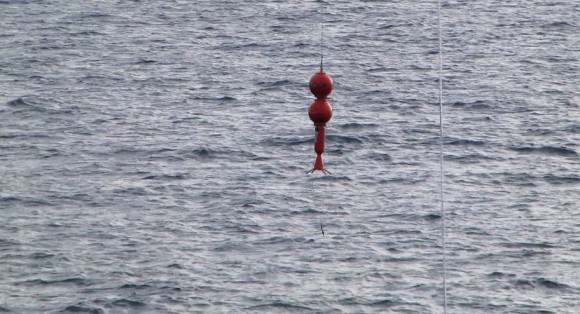
The balloon ascent took 40 minutes, bringing the system to an altitude of 14,000 m, at times raising the system at 120 km/h. When it reached that altitude, the flight controllers on the naval ship lit the rocket engines for 30 seconds, bringing it to 40,000 meters. From flight data transmitted to the control centers of ARCA and the Romanian civil aviation authority (ROMATSA) the team was able to confirm the successful flight trajectory, which had an error of only 800 m from the center of their safe trajectory.
A payload on board the capsule took pictures from the top of the trajectory.

But at the capsule’s reentry, the parachute did not open, and a ship sent to try and find the capsule in the water was not able to find and retrieve it. But the ARCA team said they didn’t look for it for very long, since most data were transmitted by radio telemetry and satellite and recovery isn’t an objective of the Google Lunar X Prize Competition.
However, they were able to complete the successful launch of the first Romanian space rocket, as well as their first flight of the Google Lunar X Prize Competition. They also verified their rocket stabilization system, and reached the highest altitude ever by an object designed and built entirely in Romania.
In November 2009, ARCA’s test flight hopes were dashed when the balloon’s lines became entangled during inflation and had to be cut, and the test curtailed.
Rockoons were tried and then abandoned by the US in the 1950s because they blew off course in windy conditions.
Watch a video animation of the test flight:
See more images of the test flight at ARCA’s Picasa page.
Source: ARCA


